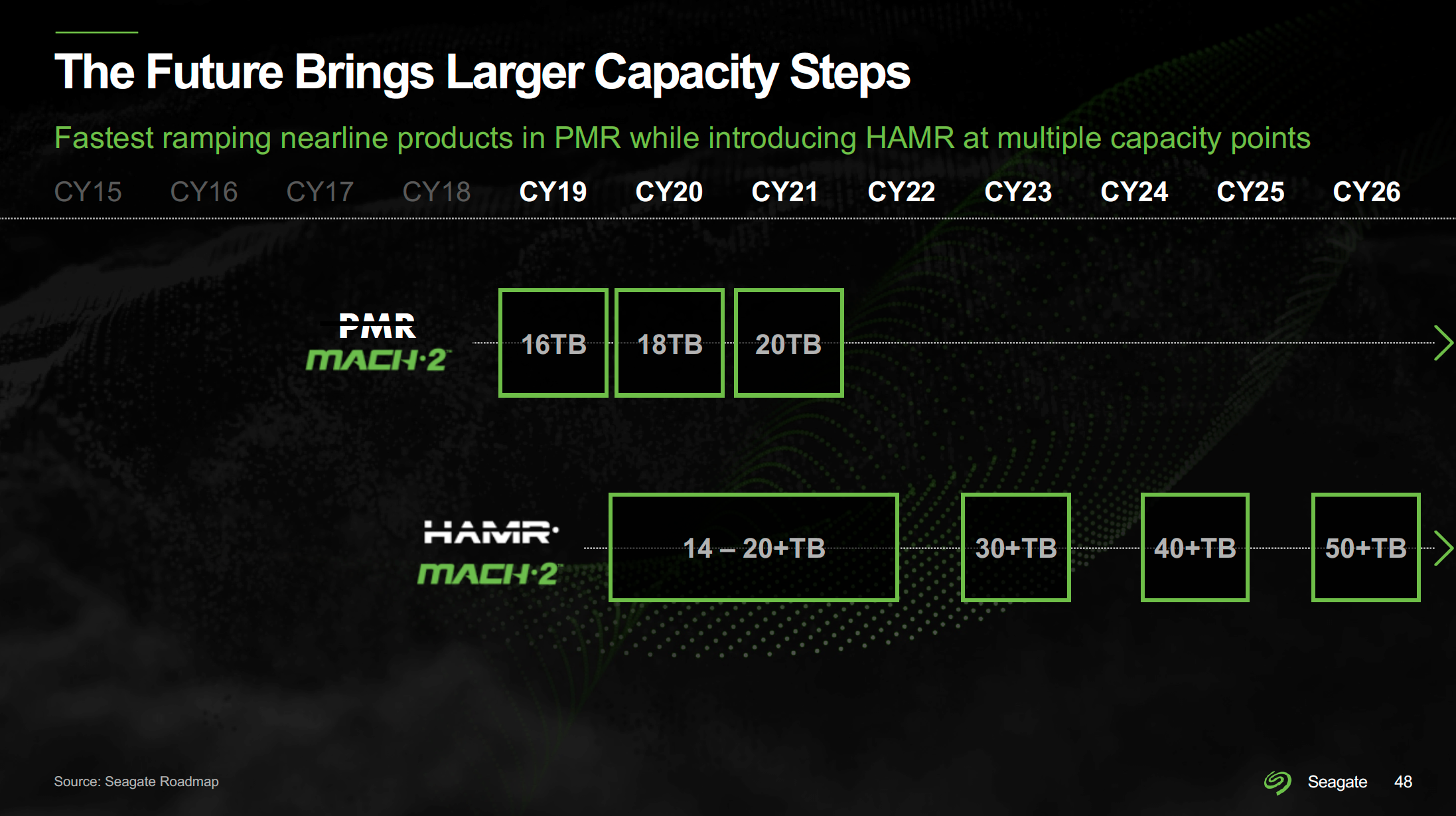Seagate Aims to Ship 30TB+ HAMR Hard Drives in Mid-2023
Seagate sets a launch window for its HDDs with an over 30TB capacity.
Seagate has been talking about its 2nd generation hard disk drive platform featuring its heat-assisted magnetic recording (HAMR) technology and capacities beyond 30TB for quite a while but has never disclosed when exactly it plans to launch them. However, this week the company finally revealed that it intends to release its 30TB+ HDDs in mid-2023, a year from now.
"We are well down the development path towards launching our 30+ TB family of drives based on HAMR technology," said David Mosley, chief executive of Seagate, at the company's earnings call with investors and financial analysts (via SeekingAlpha). "We expect to begin customer shipments of these HAMR-based products by this time next year."
Seagate's 2nd generation HAMR platform is a big deal for the company as this technology will enable it to increase the capacity of its hard drives to 50TB and beyond. The company's publicly available roadmap vaguely puts the availability of '30+TB drives' on calendar 2023. Still, a formal shipment on December 20, 2023, can also be considered as a '2023 availability,' which is why we consider this part of Seagate's plan with a certain degree of skepticism. Yet, the head of Seagate announced an actual availability timeframe for these parts.
Seagate has been shipping hard drives powered by its 1st generation HAMR platform to select customers and inside its Lyve storage systems for quite a while now, but these products have never been available to a broad audience. Seagate said its 2nd Gen HAMR HDDs would be widely available last year.

There is a small catch, though. Customer shipments do not mean mass availability of 30TB+ HDDs this time in 2023. Instead, the company may again supply its HAMR drives to select clients among operators of hyperscale data centers and then hold the launch for all other types of customers.
It is not going to be completely unexpected, though. HAMR requires Seagate to change the whole HDD platform. It includes the media, magnetic layer, writing and reading heads, actuators, controller, and numerous other hard drive parts. Since these will be brand new components for Seagate, expect 30TB HAMR drives to be quite hard to produce and expensive.
Another aspect of 30TB+ HDDs with a single actuator is their IOPS-per-TB performance. As capacity increases, IOPS-per-TB performance drops, which affects system responsiveness and, ultimately, quality of service. For large hyperscalers, mitigating this effect is not a problem. Still, this issue may become a problem for people serving traditional corporate datacenters or running an enterprise-grade NAS, so they might prefer to wait for dual-actuator HDDs of similar capacity.
Get Tom's Hardware's best news and in-depth reviews, straight to your inbox.
Keeping in mind the costs/prices and IOPS-per-TB performance of single-actuator 30TB+ HDDs, we won't be surprised if those ultra-high-capacity HDDs will be available initially to select customers only.

Anton Shilov is a contributing writer at Tom’s Hardware. Over the past couple of decades, he has covered everything from CPUs and GPUs to supercomputers and from modern process technologies and latest fab tools to high-tech industry trends.
-
AgentBirdnest Reply
Correct me if I'm mistaken about this, but... it appears that everything shown on the slide, including these 30-50TB drives, is part of their "MACH.2" line, which IS dual-actuator technology, isn't it?Admin said:Another aspect of 30TB+ HDDs with a single actuator is their IOPS-per-TB performance. As capacity increases, IOPS-per-TB performance drops, which affects system responsiveness and, ultimately, quality of service. For large hyperscalers, mitigating this effect is not a problem. Still, this issue may become a problem for people serving traditional corporate datacenters or running an enterprise-grade NAS, so they might prefer to wait for dual-actuator HDDs of similar capacity.